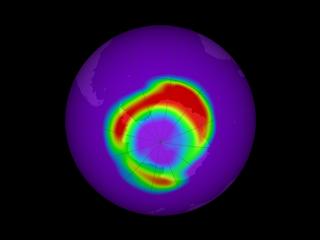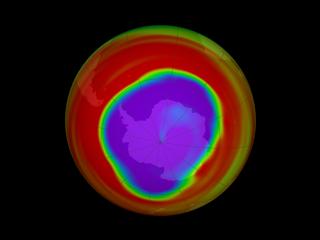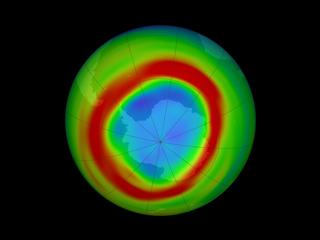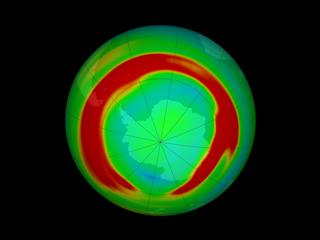Exploring Earth’s Limb

A NASA satellite monitors the edge of Earth to study how the planet’s atmosphere is changing.
Detecting gas molecules where they occur at different heights in the atmosphere requires going out on a limb—Earth's limb. From orbit, Earth's limb is the fuzzy blue halo that appears above the surface. Instruments like the Microwave Limb Sounder on NASA's Aura satellite observe the limb to get a side view of the atmosphere from the ground to where it thins out into space. This perspective allows scientists to measure atmospheric chemistry layer by layer—essential for monitoring the gases that contribute to the hole in the ozone layer and for evaluating the impact of clouds on climate change. The Microwave Limb Sounder was the first to measure, from space, all the gases that are part of the ozone depletion cycle, giving scientists the first observations that revealed the full chemical process of ozone depletion as it occurs. Explore the images for views of different gases observed by the satellite visualized on a globe.

At high altitude, molecules of ozone form a protective layer that blocks harmful ultraviolet rays from the sun.

Chlorine monoxide is a gas in the atmosphere that plays a significant role in the depletion of ozone.

Hydrogen chloride is a gas that forms when ozone-depleting chemicals in the atmosphere are broken down by sunlight.

Nitric acid is a gas that can affect the rate at which ozone depletion occurs.
Credits
Please give credit for this item to:
NASA Goddard Space Flight Center
Cover image courtesy of NASA/JSC
-
Animators
- Stuart A. Snodgrass (HTSI)
- Lori Perkins (NASA/GSFC)
-
Scientist
- Mark Schoeberl (NASA/GSFC)
-
Writer
- Ellen T. Gray (ADNET Systems, Inc.)
Release date
This page was originally published on Thursday, July 2, 2015.
This page was last updated on Wednesday, May 3, 2023 at 1:49 PM EDT.



